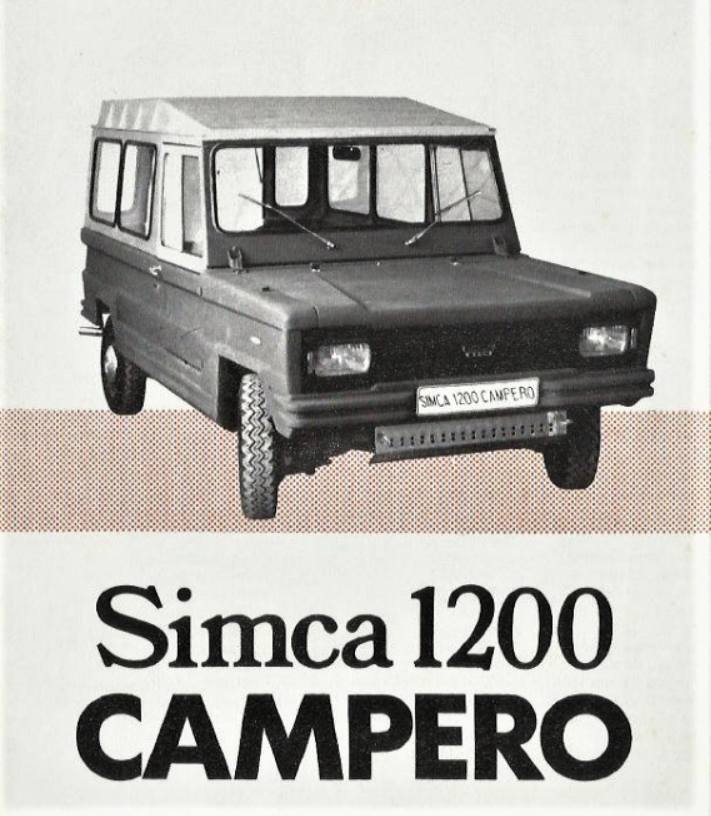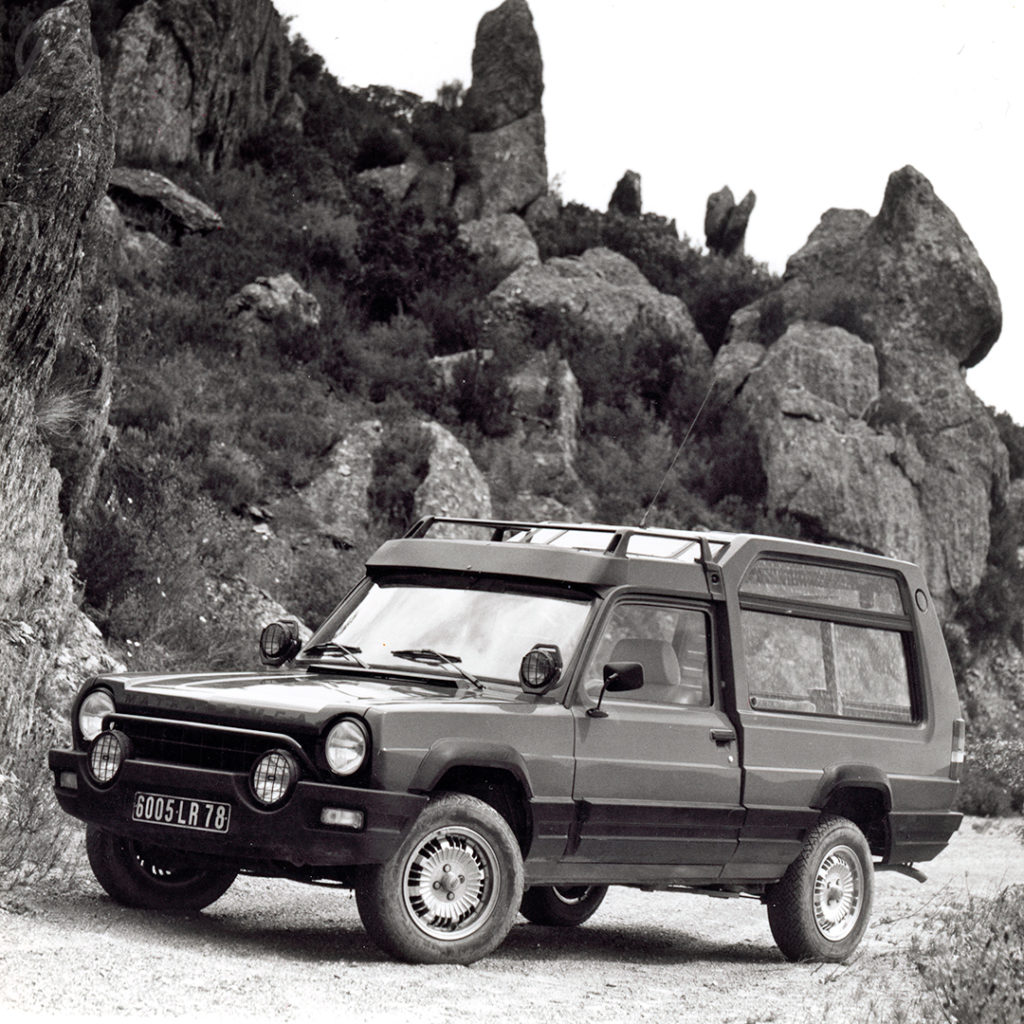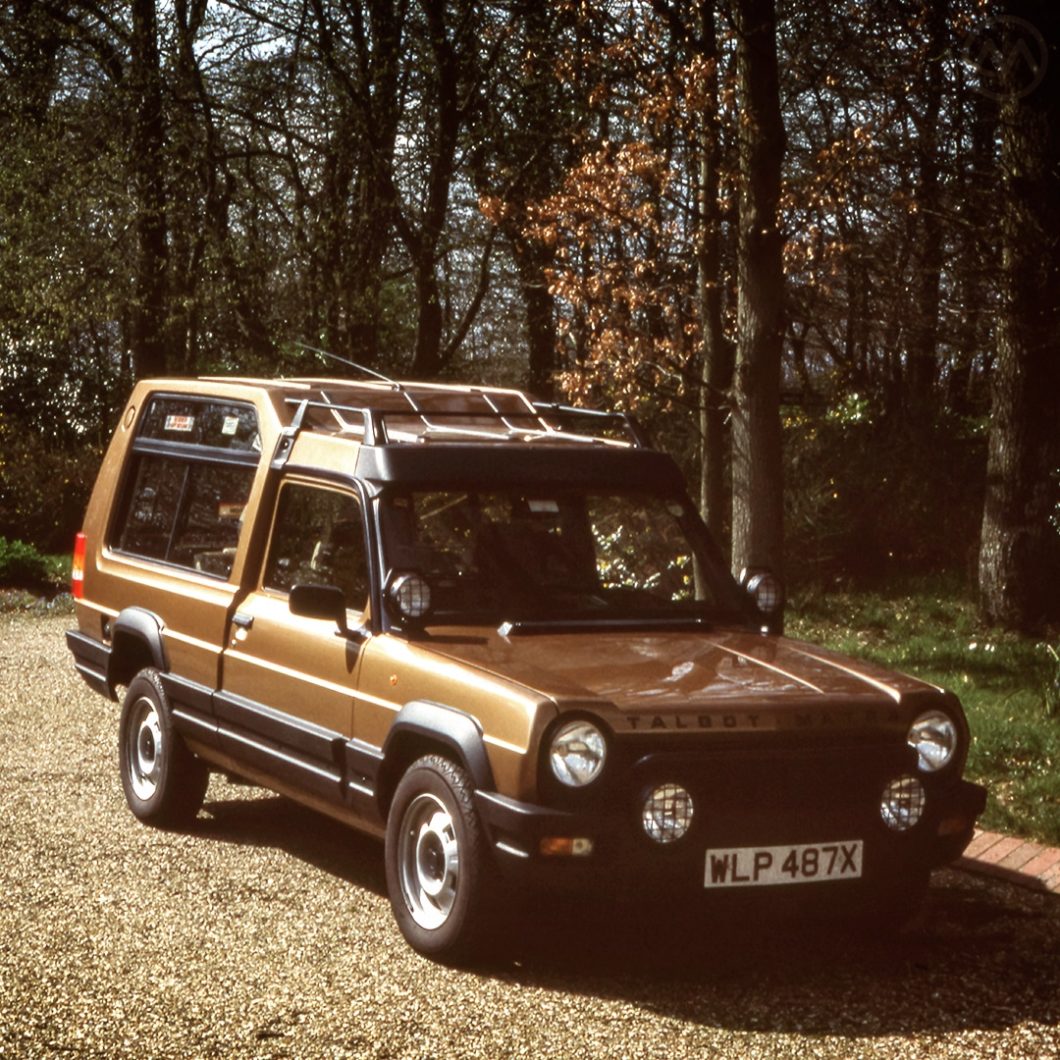Almost nobody realized it at the time, but 1977 was the year “crossovers” were born. They took two very different forms, and it was 20+ years before such vehicles started to become commonplace in the U.S., but two very interesting (and very different) SUVs debuted that year: the Soviet Lada Niva and the French Matra Rancho, seen here.
Being unibody vehicles rooted in front-wheel drive small car thinking, both were unlike other SUVs right from the start. But they were also very different from each other.
The Lada was a highly capable four-wheel-drive off-roader in a body that looked like a Fiat 127 on steroids. It was descended from multiple Soviet supermini prototypes, making it look rather car-like by seventies standards, but ended up beefed up enough to be a kind of baby Ford Bronco. The Matra went in the other direction, becoming the very definition of a “soft-roader.” It visually advertised tough truck ruggedness but was essentially just a front-drive Simca economy car underneath.
Thus was born the “leisure activity vehicle” so familiar today.
A Junior Range Rover
Matra Automobiles, a division of the defense contractor of the same name since 1963 ( previously Automobiles René Bonnet), became closely allied with Simca in the mid-1960s, and its sports car projects were encouraged by Simca’s parent company, Chrysler. The defense side also financed Matra’s high-profile racing efforts, which went a long way toward selling M530s and, after 1973, the Bagheera sports coupe.
But the company was keen to expand into new products. Such new developments would surely be marketed in concert with Simca, so whatever they came up with had to fit within the Chrysler Europe product mix, share parts with Simca, and not interfere with any established models.
Engineer-turned-boss Philippe Guédon very quickly recognized the popularity of the circa-1971 Range Rover. He also understood why people who would never have previously considered a Land Rover seemed to gravitate to this new truck, which offered car-like dynamics and style. But the Range’s size and V8 appetite were a hard sell after OPEC. But what if Matra built a vehicle that offered the same kind of look and feel of the Range, but on a small car platform that got good gas mileage?

As it happened, the template for such a vehicle already existed, in Spain. In 1973, a Madrid Simca dealer (Talleres Panades) had commissioned a run of coachbuilt off-roaders based on the hot-selling Simca 1200 (predecessor of the Chrysler/Talbot/Plymouth Horizon). The Simca 1200 Campero was designed by Barreiros’ Antonio Maduro as a kind of halfway vehicle between the tiny, basic Citroën Mehari and the larger Jeep Commando, which was being built locally in Spain.
The Campero was a rudimentary, basic-looking machine with an agricultural-looking fiberglass body over Simca 1200 mechanical pieces, but it got the job done. Light and grippy, it wasn’t a terrible performer in light off-road duty. Chrysler Europe and Matra supposedly soon took a keen interest in this boxy mountain goat, bringing one to France and (reportedly) dissecting it to see how it worked.
Matra-Simca Rancho
The Rancho, at first project P12, was fundamentally similar and also based on the Simca 1200. Instead of the Campero’s purely utilitarian body and mission, it would carry a high-style body and lots of off-road look touches. Although inspired by the Campero, Matra had also considerably changed the mechanical spec by the time the Rancho went into production.
To create it quickly and cheaply, Guédon’s team took Simca’s 1100 VF3 cube van, also sold in some countries as a Dodge, and built the Rancho’s structure on top of that. The VF3 enjoyed upgraded suspension pieces to cope with hard commercial duty, and those would also serve the Rancho well.
To give it enough power to cope with the extra weight, Matra fitted the 80hp 1,442-cc Poissy four from the Simca 1308, a larger engine than anything ever offered in the Simca 1200. The brakes were from the 1100Ti “hot hatch,” and the gearbox from the Simca/Chrysler-Europe 1307.
The cube van part, which looked similar to a Renault R4 van’s big cargo box, was replaced by a steel-framed but lightweight fiberglass rear body with huge picture windows and a split tailgate; just like the Range Rover’s. The roof kicked sharply upward on this added box, and the rear seat was mounted 4 inches (10cm) higher than the fronts to boost legroom and give rear passengers a safari-tour-like view.
Below the beltline, the Rancho was festooned with black plastic cladding to keep brush at bay, and there were lots of cool off-roader touches like the cowl-mounted spotlights, the forward roof rack (which helped disguise the roof join) and an integrated brush bar. The exterior design was the work of the talented Greek designer Antoine Volanis, who had also styled the Bagheera and would later go on to other Matra projects including the Murena before departing for Citroën.
There would ultimately be five versions, the standard machine; the two-seat “Affaires et Sociétés” (AS) created as a tax dodge; the Rancho X with tow hooks, roof bars and special alloys; the 1981-only Découvrable with canvas sides and an open rear area, and finally the 1980-81 “Grand Raid,” with a bigger brush bar and a spare tire atop the roof, among other extras.

The Soft Roader
While it certainly looked the business, the Rancho had only 7 inches (18 cm) of ground clearance and came only with front-wheel drive. Four-wheel drive, which would have greatly increased weight and cost, was never on the menu. But while Motoring Journalists were stumped as to why anybody would want an off-roader that couldn’t venture very far off an actual road, customers really liked it.
The styling and image resonated with the same people who liked the Range Rover but didn’t have the cash for one. The Rancho was also comfy and spacious and quickly found favor with rural buyers, who didn’t want a fuel-inefficient off-roader most of the time. However, Matra’s circumstances changed when Peugeot bought Chrysler Europe in 1979.
After the buyout, the Rancho was relabeled as a Talbot-Matra (as seen on this 1982 model) and continued in production until 1984. Since construction required a donor Simca 1100 cab and chassis, it was fortunate that PSA had kept that model alive as a commercial vehicle. But Matra had in mind a very different machine to replace the Rancho, which was clearly living on borrowed time 1982.
Instead of a new Rancho based on Peugeot architecture, it instead proposed an idea much closer to a light passenger van. When Peugeot turned them down, Matra brought it’s new concept to Renault instead, where it became the original Espace. A proposed Renault 18-based Rancho replacement was also worked up once it seemed like Le Regie would be a better partner, but there was only room for one vehicle. The tie-up with Renault also meant ending production of the PSA-related Murena and Rancho.
The Espace was just as successful in Europe as Chrysler’s minivans were on this side of the Atlantic, but nobody ventured back into the car-like crossover idea for almost another decade, until Toyota began work on the RAV4 in 1991. The Lada, of course, is still with us today.
Sadly, the Rancho pictured at the top of our story, seen in an OldMotors archival photo, seems to have been scrapped after just nine years on the job.

